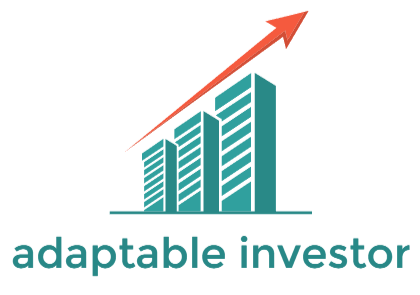This story was originally published here.
Investing in stocks should truly be about buying the underlying companies, and not just the stocks of the companies. It might read as trite, but before you click on the buy button in your brokerage account, you need to get to know the company and want to own it. This process helps investors identify the best long-term stocks to buy and hold.
It also means understanding what the company does now — and what’s ahead. Are the products and services in demand, and will that continue? Does the company have costs under control as well as scale when it comes to making more stuff or providing more services.
When l look at a company, I look for not just rising sales, but rising operating profits. Earnings can be managed for any given quarter. But sales are sales, unless there is fraud. Subtracting the cost of goods and services — along with general and administrative costs — gives you the operating profits.
You want to own companies with fat operating profits and rising operating margins. That means that as a company sell more, it earns more on each transaction. This shows that the company isn’t just dumping stuff to gain market share in the short term.
Then you want to ask: What will go wrong, and how will the company deal with it? What will go wrong typically comes down to either a drop in sales or a rise in costs. Go back through the past years and see when sales dropped, or when costs rose, and how it played out for the company.
And if history doesn’t provide enough evidence, it’s not that hard to run some numbers.
Don’t Stop Your Research at Sales and Profits
Most investors stop at looking after sales and profits at their peril.
This means that after the fun of the income statement, you need to turn to the balance sheet. I’m a former banker and bond market guy. And if I can’t see myself lending a company money, then I’m not buying it — and I’m not recommending it to subscribers.
You can do some basic credit analysis of your own. Look at the current ratio which compares cash and equivalents against liabilities going out to one year. If this ratio is less than 1, then the company has a potential threat. Then look at the debt compared to assets. If a company has debts that are climbing closer to 100% of assets, that’s a big red flag that missteps will bring in discussions of Chapter 11.
And, if a company has a pile of debt that is coming up very soon, then there better be a plan outlined to roll it over. I prefer companies that have debts spread throughout maturity dates. And I like companies with bonds and other publicly traded debt to be well supported in the market. If a company has bonds that are sagging, that’s a red flag that creditors aren’t impressed, and you need to stay away.
Finally, if the balance sheet and the income statement are good, it comes down to the value of the stock.
I first focus on the current price-sales ratio, which takes the market capitalization divided by the trailing annual sales of the company. If a company’s price-sales ratio is 1 times that means that the stock is valued at what the company sold. A ratio of 2 means that the stock is valued at twice what it sold.
But you want to find a good company that hasn’t been fully priced.
For that, look at the price compared to the intrinsic value. This is known as the price-book ratio. Compare it to its peers to see if the stock is cheaper on an intrinsic basis or if it’s expensive.
10 Long-Term Stocks to Buy and Evaluate Each Month
Most think you can just buy and forget about long-term stocks. But you need to do all of the above analysis each and every month. Sum it up by asking yourself: Would I buy this stock all over again, and why? And then ask yourself: At what price?
If you can’t answer the first question — or if the price that you’d be willing to pay is below its current price — it’s time to sell. But if both queries are good, then keep owning the stock and perhaps buy more.
Never hold shares and hope that something will work out. If a stock is down, too many investors trick themselves into holding out for a bounce to sell. That never works, and more pain will likely follow. Or, investors feel they’ve done so well with a stock that they refuse to cash out — again leaving plenty of room for pain.
OK, enough with my words about long-term stocks. You are reading this to get some guidance for stocks that you can do your homework on and perhaps buy. Here are 10 long-term stocks I’m a fan of now…
Editor's Note: To see the full list, click here.
65 Unique Ways ANYONE Can Make Extra Cash (Without Getting a Second Job)
Are you looking for great sources of real income, without having to get a second job?
Then keep reading, because author Neil George wants to send you his new book that profiles 65 simple ways to earn large amounts of work-free income.
…extra cash that you can collect ON TOP of your Social Security check…
…without messing around with crappy jobs. (Pizza delivery driver? No way.)
These are PROVEN cash-gushing strategies… the kind typically used by the wealthy elite.
And the best part…
Neil George has set aside copies of his book, Income for Life, and he’s willing to send you a hardback version today, ABSOLUTELY FREE (just pay shipping).
(Just 517 copies left, so click here to claim yours before it's ripped away.)
Here's just a sample of what you can find inside:
- Learn the secret of the $50,000 lump sum Social Security check. Seriously, it couldn’t be easier!
- Use what Neil calls the “F.H.A. Loophole” to get the government to pay your mortgage – PLUS receive hundreds in extra cash on top.(Page 217)
- Collect $100s for pictures in Old Family Photo Albums! Believe it or not, there is an easy way to turn your old artwork/photographs into $100 bills (certain businesses are desperate). (Page 297)
- Get paid every time your favorite song gets played on the radio! This little-known website allows you to tap into royalty payments every time your favorite song is played on the radio. Some lucky folks collect thousands of dollars a year! (Page 307)
- Pocket upwards of $197 PER HOUR simply by taking a walk through the woods in the fall… or $137 while visiting your favorite beach in the summer… and many, many more!
Needless to say, this book has become highly sought after.
So if you don't claim your free copy of Income for Life today, we'll send it to the person behind you in line…





